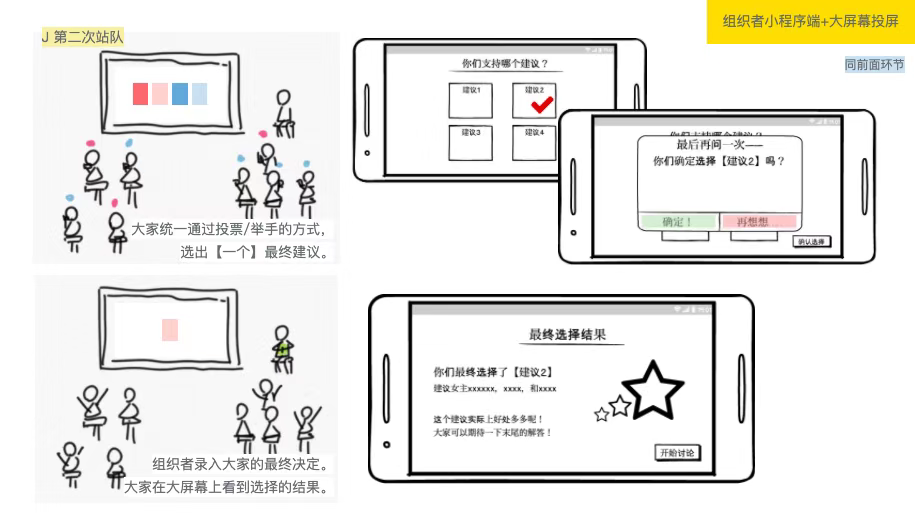This interactive mini-APP helps her organize a public debate on gender issues anywhere in her village
In rural China today, a woman is likely to receive 1.33 years less in education and 60% in income, compared to her brother. Traditional gender outlooks remain a major hinderance on rural women reaching their full potential, while many of these women, especially in the younger generation, are sense-making of the possibilities of a future different from that of their mothers’ generation.
In spring of 2020, Rural Women Development Foundation Guangdong invited my team to design a tool to help rural women leaders to organize public discussions regarding gender issues in their villages. Together we believed, to spark public conversation is the first critical step in helping women living in traditional social environments to navigate the complex topic of gender disparity.
From field research, we discovered that rural women in China are extremely interested in talking about gender issues, but not in ways that a college professor might. They may not have heard of abstract concepts such as “social gender”, but they are very keen on voicing their opinion on events that affected their daily lives, such as whether they agree with their husbands being the sole family finance decision maker.
After many conversations with these women, we decided for the design principles for conversational tool to be:
1. highly relevant to the daily realities faced by rural women;
2. connecting seemly personal problems into underlaying shared experiences;
3. open and fun.
After considering many options for the form of the tool, we decided to experiment with a digital format. We made a prototype for a mini APP (an app that operates in the Wechat environment) , which an organizer can launch on her phone, and share her screen on a large monitor, such as a TV or a computer projector. Then, following the APP’s interactive, gamified interface, she can guide up to 20 participants through a fun, and often heated debate on an issues such as “what to do when my mother-in-law pushes for a grandson?” or “what can I do if I want to start a small business instead of being a stay home mother?”. The debated is doted with short video enactments of quotidien events, opinion voting to make the event fun and active.
With two rounds of field testings, real users gave us many valuable feedbacks, one of which is to add short interviews of other rural women telling their successful actions relating to the discussion.
Finally, the 小家事、大家事 (literally means something like small family issues are everyones’ share issues) mini APP was launched in the fall of 2020. It is now freely available for women anywhere in China to use, and being a digital tool, its usage can be monitored and new episodes (and topics for discussion) can be added with low cost.
I personally sat in on many of events facilitated by this tool. Having been half grown up in western culture, I have always been careful in hiding my personal dismissal of the patriarchal institution in these events. But the seriousness and assertiveness with which some of the participants voiced their independence have always surprised me.
I believe a generation of rural woman in China is having an “awakening” in issues regarding social gender, however without a safe space for public discussion, these women may dismiss their confusion, discomfort or anger as private issues that they must face alone. And the types of events facilitated by tools such has this one, however small, creates a safe and accessible environment for these women to understand their personal situations in a wider context, and by sharing common experiences they may find the social support to navigate the difficulties they face.
Photo credit: Rural Women Development Foundation Guangdong
Photo credit: Rural Women Development Foundation Guangdong
Photo credit: Rural Women Development Foundation Guangdong
Design lead: Linda Tan
Research and prototype testing: Lixing Zhang
UX and visual design: Daiying Yang, Jiarang Zhang










